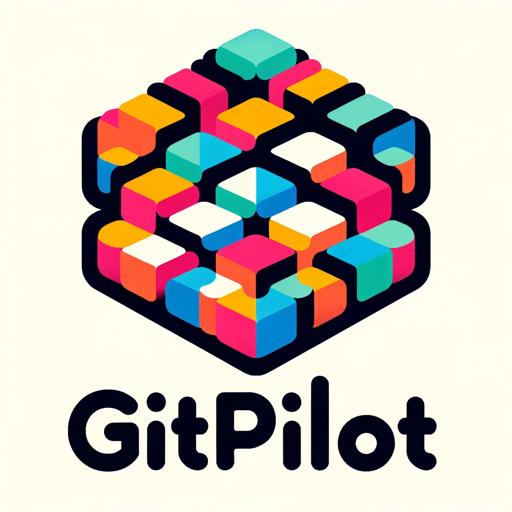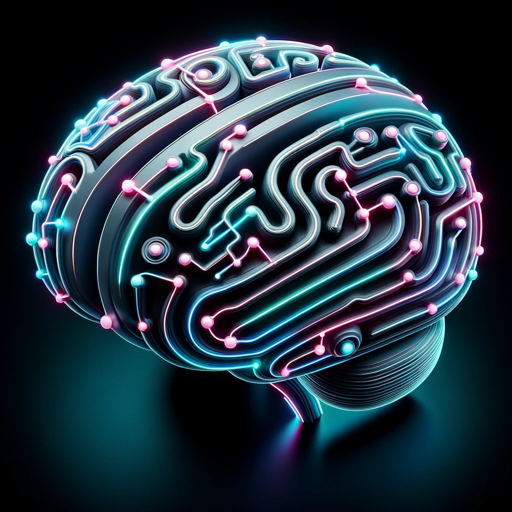神经导航-AI-powered neuroimaging assistant
AI-powered insights for neuroimaging professionals
请说明你的fMRI数据。
你的fMRI数据有哪些问题?
我怎样帮你处理数据?
需要什么统计工具的帮助?
Related Tools
Load More
GitPilot
Clear, brief GitHub aid, for you

AI Neurology
AI For Neurologists

Neuro Assistant
Neurology-focused GPT for creating patient HPIs with medical accuracy.

Vision
Image analysis expert for counterfeit detection and problem resolution

Dr. Neuroscience
A scholarly expert in neuroscience

Neuro Explorer
Extensive Neuroscience knowledge base enriched with the latest scientific papers.
20.0 / 5 (200 votes)
Introduction to 神经导航
神经导航 (Shén Jīng Dǎo Háng) is a specialized version of ChatGPT designed specifically for neuroimaging analysis, with a focus on functional magnetic resonance imaging (fMRI) data interpretation. The primary goal of 神经导航 is to provide in-depth support for researchers, clinicians, and students involved in neuroimaging studies, offering detailed explanations of statistical methods, assistance with data analysis, and guidance on neuroimaging techniques. It combines advanced knowledge of neuroscience with the ability to communicate complex ideas clearly, making it a valuable tool for those navigating the intricacies of brain imaging. An example scenario illustrating its use might involve a researcher analyzing fMRI data who encounters difficulty interpreting the statistical significance of brain activation patterns. 神经导航 can assist by explaining the underlying statistical models, suggesting appropriate corrections for multiple comparisons, and helping to interpret the results within the context of the research question. By doing so, it not only supports the research process but also enhances the user's understanding of the methods involved.

Main Functions of 神经导航
Statistical Analysis Support
Example
神经导航 assists users in performing complex statistical analyses on fMRI data, such as voxel-wise analysis, ROI-based analysis, or whole-brain connectivity analysis.
Scenario
A neuroimaging researcher is running a voxel-wise analysis to detect brain regions activated by a specific cognitive task. 神经导航 helps by explaining how to set up the statistical model, choose the correct contrasts, and apply necessary corrections for multiple comparisons, ensuring the results are robust and reliable.
Neuroimaging Technique Guidance
Example
It provides detailed explanations of various neuroimaging techniques, such as functional connectivity analysis, diffusion tensor imaging (DTI), and task-based fMRI.
Scenario
A graduate student is learning about functional connectivity analysis for the first time. 神经导航 offers a step-by-step guide on how to preprocess the data, compute connectivity metrics, and interpret the results, thereby facilitating the student's learning process and application of the technique in their research.
Interpretation of Complex Results
Example
神经导航 helps users interpret complex fMRI results, including understanding brain network dynamics, interactions between brain regions, and the implications of findings in a broader neuroscientific context.
Scenario
A clinician is reviewing fMRI results from a patient with a neurological disorder. The activation patterns are complex, and 神经导航 assists by providing insights into the possible functional implications of these patterns, helping the clinician to make informed decisions about diagnosis and treatment.
Ideal Users of 神经导航
Neuroimaging Researchers
Researchers working with fMRI or other neuroimaging modalities are the primary users. They benefit from 神经导航's ability to offer in-depth analysis support, statistical guidance, and help in interpreting complex data. This service is particularly useful for those who may not have an extensive background in statistics or for those who are dealing with novel or challenging datasets.
Graduate Students and Educators
Graduate students studying neuroscience, psychology, or related fields, along with educators teaching these subjects, can greatly benefit from 神经导航. It serves as an educational tool, helping students understand complex concepts in neuroimaging, guiding them through data analysis processes, and providing detailed explanations of various techniques. Educators can also use 神经导航 to supplement their teaching materials, offering students a deeper understanding of the subject matter.

Detailed Guidelines for Using 神经导航
Visit aichatonline.org for a free trial without login
Go to the website aichatonline.org to access 神经导航 without needing to log in or subscribe to ChatGPT Plus. This allows you to explore the tool immediately.
Set Your Language Preferences
Once on the platform, set your preferred language to Chinese or English to enhance your user experience. This step ensures that the tool communicates in your desired language.
Select Your Use Case
Identify the specific task you need help with, such as fMRI data analysis, neuroimaging technique advice, or statistical method explanations. This helps tailor the tool's functionality to your needs.
Input Your Query or Data
Enter your question, problem, or data into the interface. Be as detailed as possible to receive the most accurate and relevant response.
Review and Apply the Suggestions
Carefully review the comprehensive responses provided by 神经导航, and apply the suggestions or insights to your work. Utilize any additional tips for optimization.
Try other advanced and practical GPTs
Crayon Delight 🎨️
AI-powered charming crayon creations

InfoProductor GPT
AI-powered tool for engaging Instagram stories.

AA 05
AI-driven insights at your fingertips.
jQuery
Enhance web projects with jQuery's power

POSTGRES GPT
AI-Powered PostgreSQL Assistance

Word Tuner (for Book Writers) 📚
AI-powered tool for age-appropriate writing.

Native Speaker Polisher
AI-driven language enhancement for professionals.

Weibo小助手 v1.5
AI-powered Weibo content creation made easy.

WHISKY MASTER ITZU
Your AI-Powered Whiskey Expert

Azure DevOps Companion
AI-Powered Guidance for Azure DevOps

Azure Data Engineer
AI-powered Data Engineering Simplified

Browse For Me | 你的每日AI探索神器
Unlock the power of AI for daily exploration

- Academic Writing
- Research
- Data Analysis
- Statistics
- Neuroimaging
Q&A About 神经导航
What makes 神经导航 unique for neuroimaging analysis?
神经导航 is tailored specifically for neuroimaging professionals, offering in-depth guidance on fMRI data analysis, statistical methods, and best practices in the field. Unlike general AI tools, it focuses on delivering expert-level advice in neuroimaging.
Can 神经导航 assist with academic writing?
Yes, 神经导航 can assist with the interpretation of complex data, structuring arguments, and providing references, making it an invaluable tool for academic writing in neuroscience and related fields.
How does 神经导航 handle complex statistical queries?
神经导航 is equipped to address advanced statistical methods used in neuroimaging, offering detailed explanations, step-by-step guidance, and interpretations of results, ensuring you understand the underlying processes.
Is 神经导航 suitable for beginners in neuroimaging?
While 神经导航 is designed for professionals, it also caters to beginners by providing clear, concise explanations of concepts and step-by-step guidance on using neuroimaging tools.
Does 神经导航 require any special software to run?
No, 神经导航 is accessible directly through your web browser at aichatonline.org, with no need for additional software installation or subscriptions.